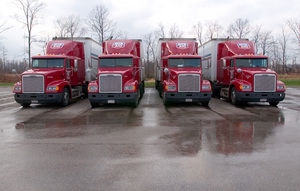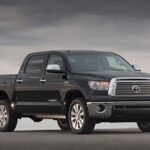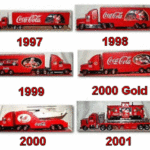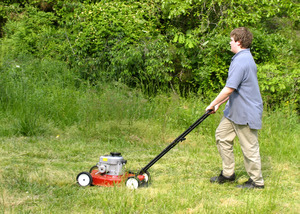Many a mechanic has gotten a good chuckle at the sight of a car with snow tires on the rear wheels, when the car is front wheel drive. The fact that the drivers Dad always put snow tires on the back, is an indicator of how little he or she knows about how the car really works. Todays cars and trucks come with a wide variety of drive train systems. It’s very important that you understand how and why your vehicle is set up the way it is. You may be driving in an unsafe manner, or actually doing damage to your car, if you don’t have a full understanding of how it works.
4×4: A true 4-wheel drive. The 4×4 means all four wheels can receive power. This type of system is usually found in pickup trucks, and large SUV’s. You will find an extra lever in the cab, or a switch on the dash to take the vehicle in and out of four wheel drive. From the engine, power goes through the transmission and on to a transfer case. This is a gear box that divides the power, sending it to the rear axle, and also sending it forward to the front axle. The transfer case may also have a low range as well as the high range you will use during normal driving.
After the power reaches the front axle it goes through a hub Lockout before the wheels will have power applied to them. This lockout device can be automatic, engaging at the same time you place the transfer case lever in 4×4. The other style of Lockout device is called the Manual Lockouts. These require you to turn a knob at each wheel to engage the lockout. It is critical that you understand which way is locked, and which way is unlocked on your particular vehicle. The front wheels must both be locked in, to provide power to all wheels. When both front wheels are locked out, you only have power to the rear wheels. Regardless of what position the lever for the transfer case is in, if the wheel lockouts are unlocked, there is no power going to the front wheels.
By driving with one front wheel locked in, and the other locked out, you may do damage to the drive train. The differential in the front axle will be turning and trying to drive the one wheel that is locked. At best this will create additional wear, at worse it may cause damage.
4×2: The term is usually used in relation to a 2-wheel drive pickup, or SUV. All that it means is the power goes from the engine, through the transmission, directly to the rear axle and wheels. This is sometimes described as One-Wheel drive, as if you place one rear wheel on ice so it spins, the other rear wheel will not get any power. Thanks to a standard differential, all the power goes to the one wheel with no traction. Resulting in your being stuck. A limited slip differential is an improvement as it helps some power to be applied to the non-spinning wheel, though it is only moderately effective in getting you out of a wheel spinning situation.
This is the standard drive arrangement going back to the beginning of the automobile. Hence the reason Dad always put snow tires on the rear wheels in the winter. Today this system is reserved to some pickup trucks, and large cars. Ford Crow Victoria, is one model. Don’t count on all large cars as being 4×2 configuration, many are front wheel drive. One thing you can use as a guide, if it has a drive shaft going toward the rear of the vehicle it is a rear wheel drive vehicle.
AWD: All wheel drive, a relatively new term that applies to many smaller vehicles. Subaru, small SUV’s are the standard. These vehicles can come in two formats. Subaru is a true AWD, as that it is always suppling power to all wheels. Many other brands and models operate the same way, as power goes through the transmission and is directed both to the front and rear. The AWD system usually does NOT have lockouts at the wheels, so it always supplies power to all wheels. You may get less mileage from one of these, as you have no choice, your always turning all the drive train. Whether you need it or not.
The second style is a vehicle that is usually in front wheel drive, and at the flip of a switch it can engage the rear wheels, making it an AWD system. This style will be more economical to drive, as the mechanicals going to the rear wheels aren’t turning all the time.
Front Wheel Drive: This is the standard configuration for the majority of today’s cars. The engine is mounted cross wise in the front of the car, and power goes through the transmission directly to the front wheels only. If you wish to improve your traction in winter driving, the snow tires go on the front wheels. Snow chains are probably not a good idea, as when you turn sharply they may do damage to the body as clearances will decrease in a tight turn.
Now you understand the different types of drive systems found on the road today. If your still confused as to what your car has, feel free to drive to the nearest auto service center. I’m sure they will be more then happy to tell you where the snow tires go. They all like to get a good laugh, it may as well come from you as the next guy.






